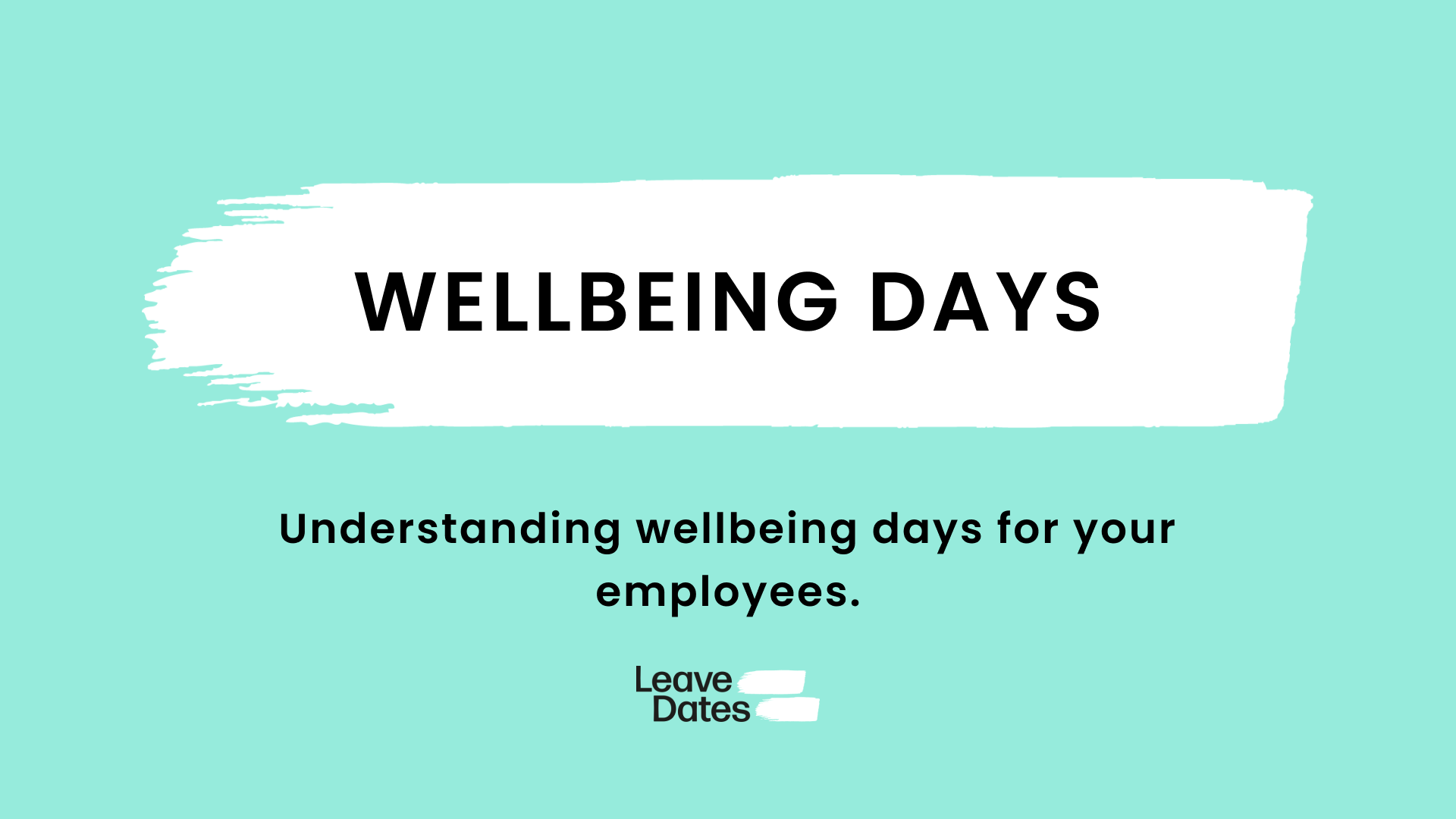
According to the results of a survey carried out recently by Slack, a shocking 50% of desk workers said they ‘rarely’ or ‘never’ take breaks during the workday. This alarming statistic points to a pressing issue in today’s workplace culture.
Desk-based workers make up a large portion of employees and job roles in the 21st century professional economy. Yet sitting at a desk all day isn’t good for us, mentally or physically. The ramifications of this tendency to forgo breaks, a form of ‘presenteeism’, are multifaceted and concerning.
Prolonged screen exposure (a feature of many desk jobs), poses a risk to ocular health; extended periods slouched at a desk can wreak havoc on our spines; and lack of breaks has a detrimental impact on productivity and mental health.
All of this perpetuates a cycle of poor focus, inefficiency and heightened stress levels, undermining both our performance as workers and our wellbeing as people.
Table of contents
- Eye health
- Physical health
- Mental health
- The solution
- Standing desks
- Lunch dates!
- Stay hydrated
- Work… less?
Eye Health
Eye health is a crucial yet often overlooked aspect of office-based work. Whether it’s a computer screen or a paper document, desk-based work normally involves fixing your gaze on something near distance for a prolonged period. This is extremely tiring on the eyes. In particular, extended screen time can lead to digital eye strain, which can be a real headache (literally).
The eye-opening truth? To be on top form for the daily hustle, your eyes need a break just as much as you do. The recommendation is that you follow the 20-20-20 rule – every twenty minutes, take a 20-second break and fix your gaze on something 20-feet away. So simple! And for the Pomodoro method converts out there (surely all of us?!), you’ll already have a timer going and this can slot right in.
As well as giving your eyes a breather, this mini break, while not the ‘country house and spa’ kind we’d probably all prefer, is also a productivity power-up – giving you sharper vision in more ways than one.
Physical health
One of the biggest threats to the health of desk-based workers is the sedentary lifestyle it’s associated with. Our bodies are designed to move – yet many of us are lying in bed for (hopefully!) eight hours, then standing up and briefly moving around before sitting down to eat breakfast and/or have a coffee, taking a brief walk then sitting down in a car, bus or train, before getting up and moving to a chair at our desks for the next eight hours.
And while some people may be offsetting this with an evening gym session or a long run at the weekend, many, many more of us are spending our downtime sat on the sofa. That’s a lot of sitting down and not a lot of movement, which studies have linked to a myriad of health issues, including obesity (and all the associated risk factors that carries) and musculoskeletal problems.
On the positive side, the dangers of work-related inactivity can be a great driver for us to take breaks at work, because this offers a valuable opportunity to squeeze in some exercise that we might otherwise struggle to fit into our day or week. This is especially relevant for parents, who go home to a whole new set of responsibilities and demands on their time.
Whether it’s a lunch time squash game or a quick afternoon jog, taking time out from work to exercise (hopefully with a change of scenery) will benefit both your overall health and your productivity. Physical activity releases endorphins, boosting your mood and stimulating creativity and problem-solving abilities – the perfect antidote to the post-lunch slump.
Mental health
In the Slack survey, desk workers who take breaks throughout the day scored 62% higher for work-life balance and 42% higher for overall satisfaction, compared to those who don’t. A good work–life balance and high job satisfaction, as well as being desirable ends in themselves, are also big factors preventing burnout.
Regular breaks at work provide important anchors for mental health maintenance, offering invaluable moments to pause, recharge and recalibrate. This doesn’t mean
disappearing entirely; for example, it could just be taking 5 minutes to slow down your whirring mind after a particularly stimulating creative meeting. Briefly stepping away from tasks enables you to mentally refresh, meaning you’re better able to tackle them efficiently when you return.
Burnout is an obvious risk of the 100-miles-an-hour approach to work, and, unsurprisingly, those who don’t take breaks are 1.7 times more likely to experience it. Even if things don’t get this far, productivity is going to take a hit if you’re ignoring your body and mind’s demands for rest. More work does not equal more productive – in fact, the opposite is true.
Desk workers who take regular breaks (and these don’t have to be long), were found to be 13% more productive than those who don’t.
So if you’re neglecting to take breaks because you think you’ll get more done, you can stop – things just don’t add up!
The solution
So we need to take breaks. We should all be pretty convinced on that by now. But how can we make sure we, and our colleagues and employees, make them a priority?
The easiest way to make something a habit is to not have to think about it, to do it routinely. This means we need to build breaks into the day so we don’t have to consciously remember to take them, because when things get busy, stuff is competing for attention and deadlines are looming – you will forget. Below are some of our top tips for small and big changes that can help you to take regular breaks.
Standing desks
One way to ensure you’re not sat down and slouched at a desk all day is to join the trend for standing desks – a recently emerged solution to the sedentary landscape of modern workstations that offers a host of compelling benefits. First, and most obviously, they counteract the perils of prolonged sitting by encouraging increased movement, alleviating strain on the lower back and neck. Proponents have also argued that the shift in posture that a standing desk necessitates actually increases alertness and focus, potentially improving work performance.
Have you ever thought, “I’d love a snack, but I just can’t be bothered to get up”? In terms of taking breaks, the physical act of standing encourages a much more fluid and dynamic work environment, lifting energy, facilitating easy and regular movement and fostering collaboration and communication among employees.
Lunch dates!
To ensure you take a lunch break, make an event of it by making it a date. Now we’re not suggesting you need to start an office romance, but involving another person gives you accountability – you’re less likely to work through lunch if you’ve got plans to rendezvous in the park with your pal who works nearby, or you promised you’d catch up with a colleague in another department.
We tend to be much more concerned about letting other people down than we do ourselves, so this is a sneaky trick to force you into treating your own time with the same respect you do others’.
Stay hydrated
This one is pretty simple to implement, and has other benefits too. Staying hydrated helps you to stay focused and keep your mind sharp. A welcome side effect, in our case, is that drinking plenty throughout the day will lead to a lot of loo breaks! It might sound silly, but 5 minutes away from the screen and a brisk walk (if the bathrooms are on a different floor and you can take the stairs, even better!) will do wonders for your focus and productivity – plus you’ll be radiant and glowing, a win win!
Work… less?
The last idea is a bigger change, a mentality shift really, but one that many forward-thinking organisations are embracing, and that’s a new philosophy on how hard and often we want to work. This is reflected in more flexible working patterns that are emerging and campaigns for a four-day work week.
For many, it is time to change how we think about work and productivity and challenge the idea that you’re not being productive unless you’re actively ‘working’.
Technology is a gift that can allow us to work smarter, not harder, but are we using it to take the heat off or are we just raising the bar? While it’s exciting to think we can push efficiencies, we could perhaps also use this to give ourselves a break every now and then so that we can function optimally in all areas of life.
Interestingly, the respondents in the Slack survey – over 10,000 workers across the US, UK, Australia, France and Japan – reported that they were at their least productive in the late afternoon. It seems productivity plummets between the hours of 3–6pm – which sounds like the ideal excuse for a break?
In many hotter European countries, a siesta at this kind of time is traditional, suggesting that this is not a new idea, but biorhythm that we have chosen to ignore in the drive toward ever-increasing productivity.
This natural dip in the day is maybe something that we are better off accepting and embracing rather than fighting it and forcing ourselves to ‘power through’, often with the aid of unhealthy props or habits that might help us meet a deadline but detract from our overall wellbeing at work.
So if we’re not really designed to be productive for eight hours straight in the day, and technology means we don’t actually have to be anymore, there is an opportunity to set new standards and find different, healthier and more creative benchmarks of productivity and achievement at work.
With AI and technology delivering productivity-enhancing tools and solutions daily, this need to always be ‘on’ seems to diminish – perhaps it’s time to let the robots do some of the heavy lifting and put our feet up?
Creating a culture that both promotes and facilitates taking regular breaks is crucial in fostering a work environment that enjoys optimal productivity while prioritising the holistic wellbeing of its workforce. So next time you’re up against it, consider putting down the Red Bull and picking up a pillow!



